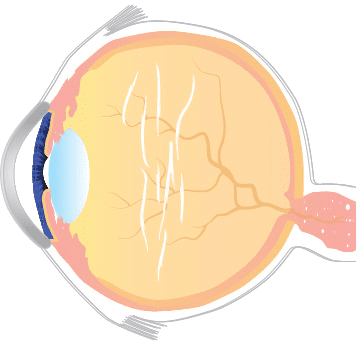What do they mean?
Age
As you get older, your risk of developing floaters increases. Floaters tend to occur in people who are over 40 years of age and are most common in those who are in their 60s and 70s. However, some younger people may also develop floaters.
As you get older, the vitreous humour in the middle of your eyeball can become less firm and strands of a protein called collagen may become visible within it. The collagen strands may appear to swirl as your eyes move.
Normally, light travels through the clear layer of vitreous humour to reach the retina. The retina is the light-sensitive layer of cells at the back of your eye that turns what you are looking at into an image, and transmits this to your brain. Floaters can cause shadows as they float through the fluid in your eye.
Posterior vitreous detachment (PVD)
Floaters can be a symptom of posterior vitreous detachment. This is a common condition that occurs in about three-quarters of people over 65 years of age. PVD can occur as the result of changes to the vitreous humour as the eye gets older.
As we get older the central part of the vitreous humour becomes more liquid and the outer part, known as the cortex, starts to shrink away from the retina. Floaters are created as a result of the collagen clumping together.
Flashing lights can also be another symptom of PVD. Flashing lights may occur when the outer vitreous humour pulls on the light-sensitive tissue of the retina. The pulling on the retina causes brain to interpret it as a light signal.
Retinal detachment
Floaters may be a sign of retinal detachment (when the retina separates from the wall at the back of the eye). If you have retinal detachment, you will usually have:
- a large number of floaters
- flashing lights
- loss of vision
There are several types of surgery to repair a detached retina. The type of procedure your Consultant Ophthalmic Surgeon performs will depend on the severity of retinal detachment.
If you think that you may have retinal detachment, seek urgent medical attention from your GP or optometrist (optician). If you are patient of Centre for Sight already please call 01342 306020.




